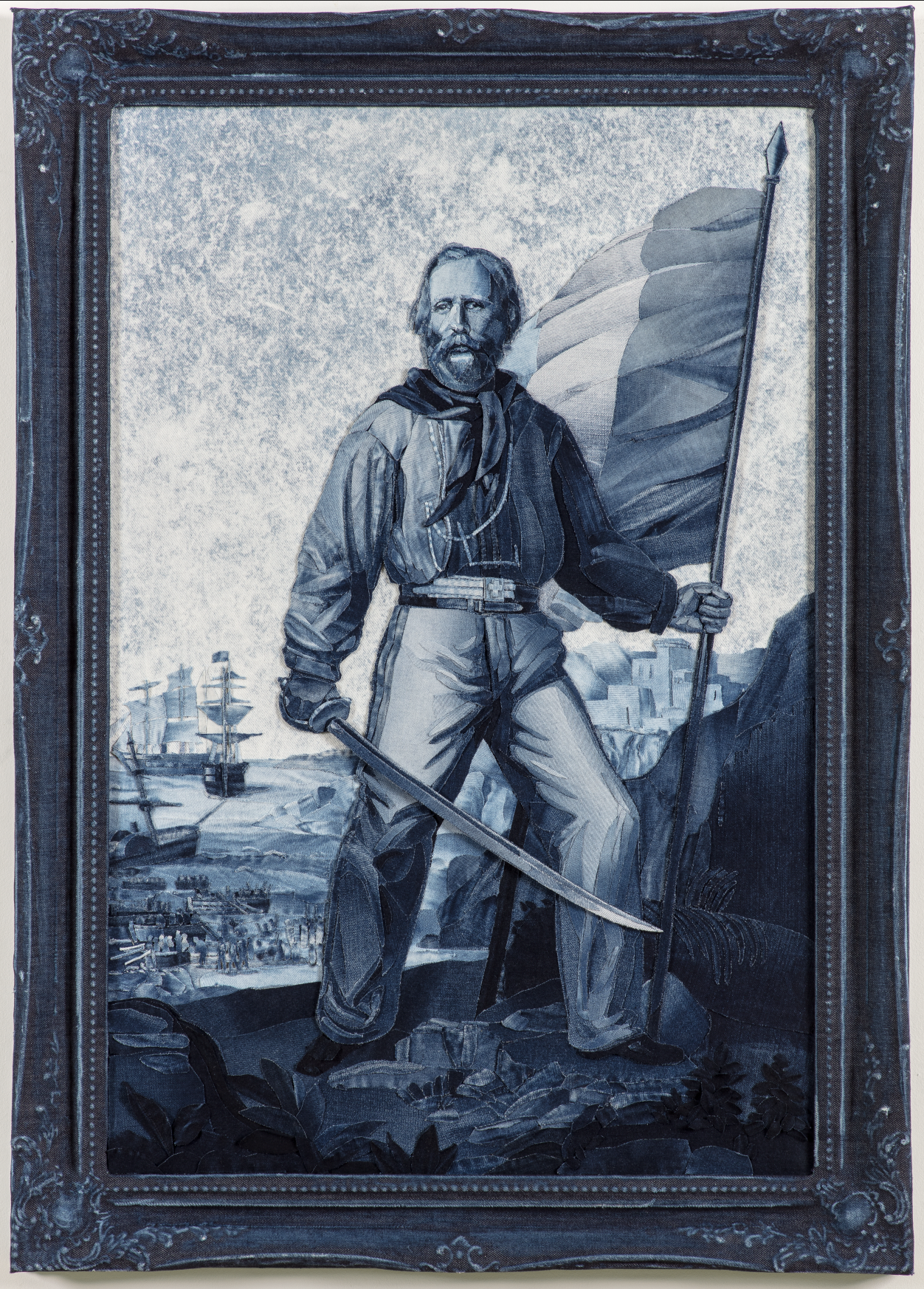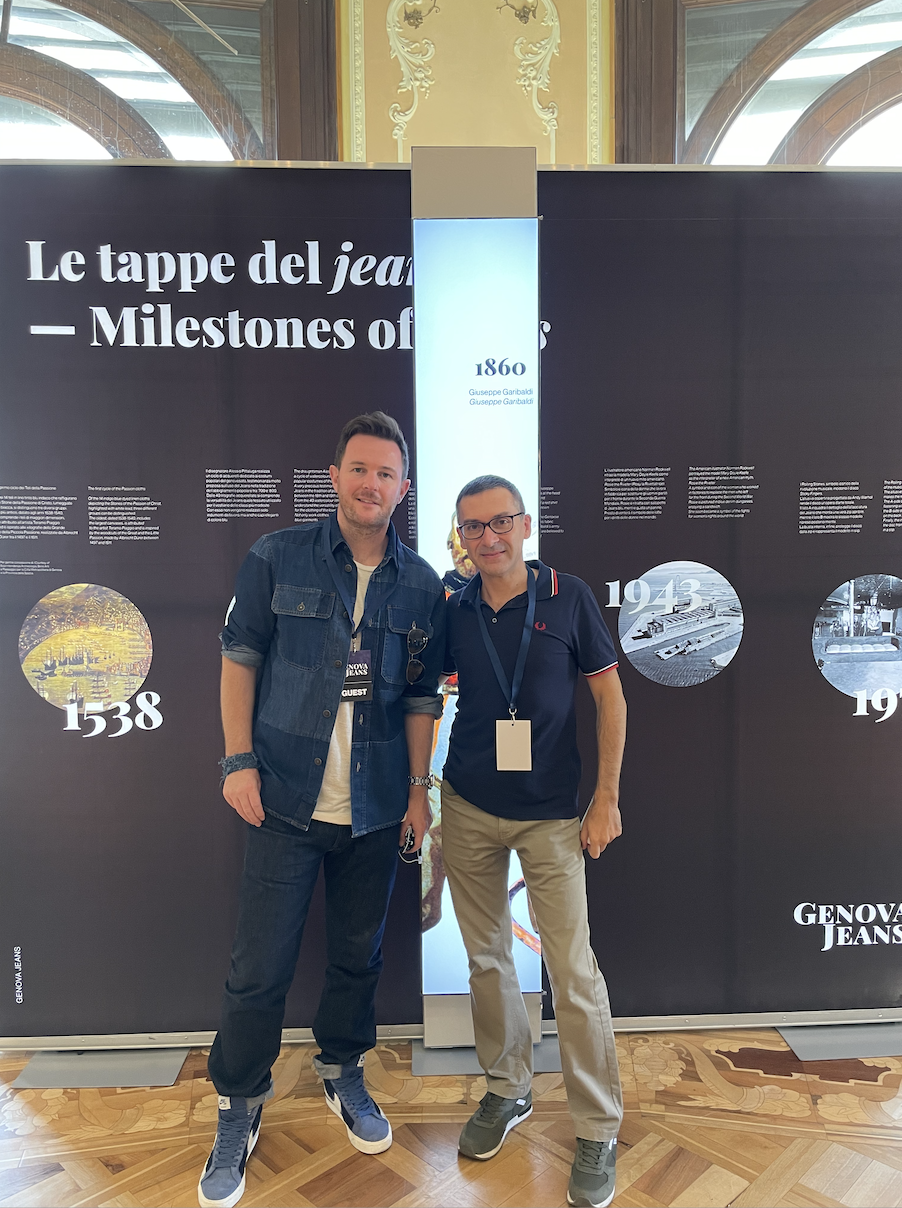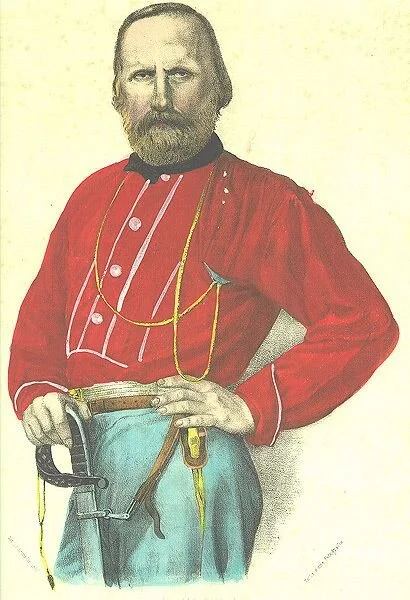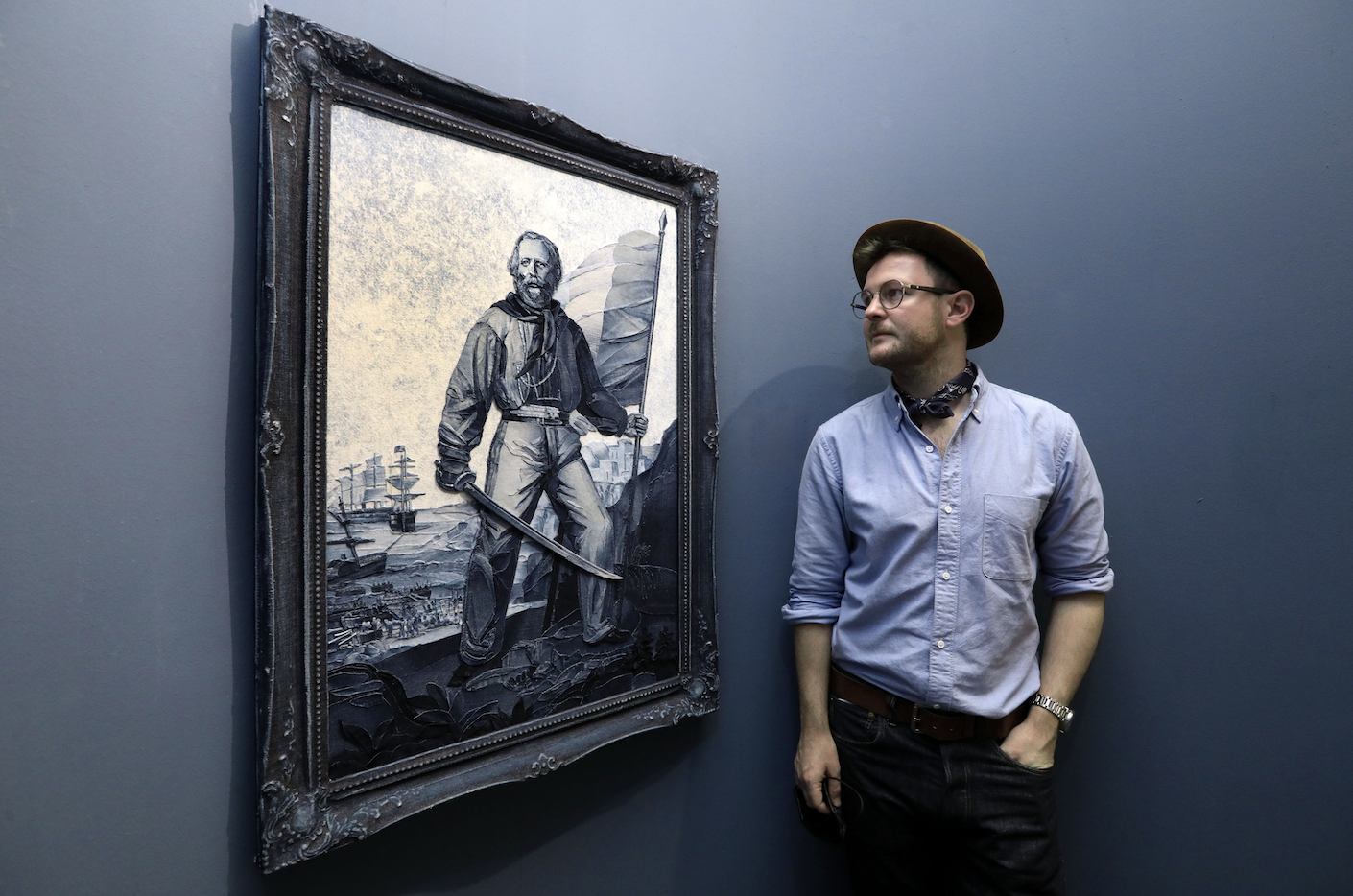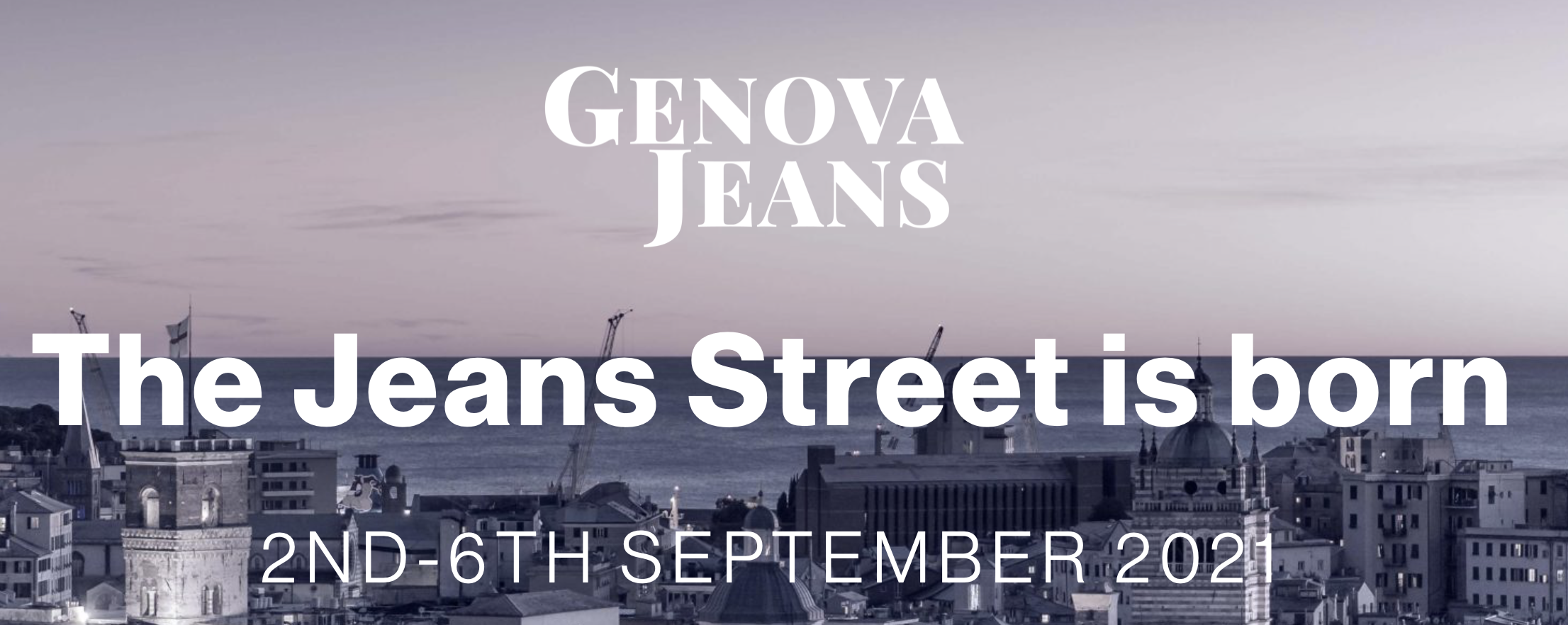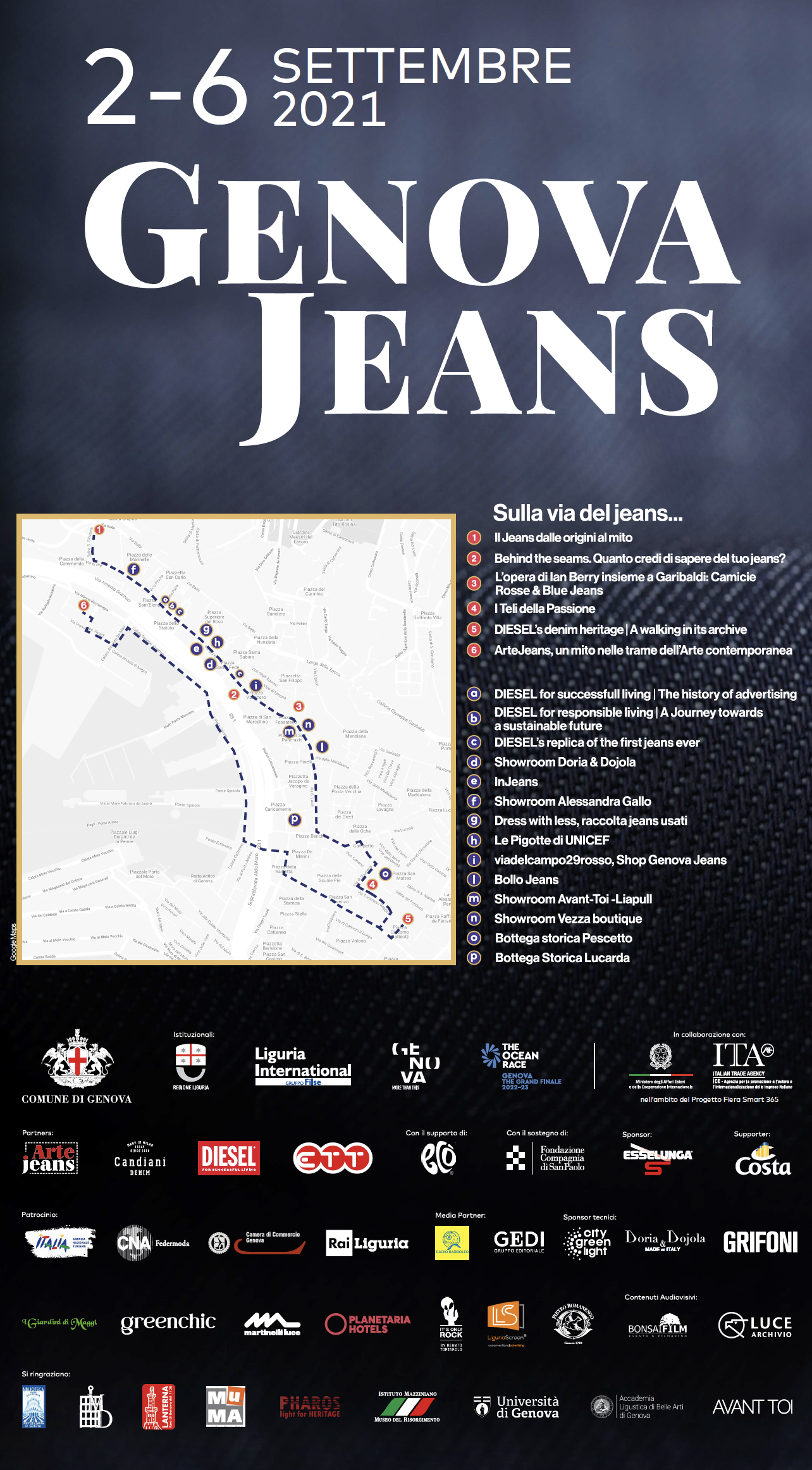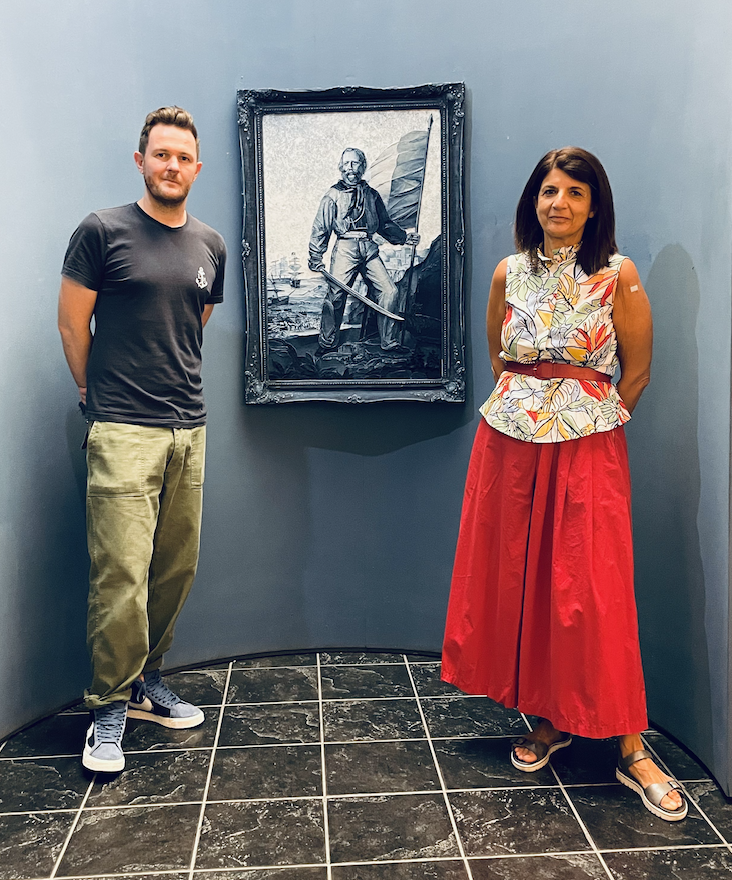Ian Berry has been delving into the history of denim, in fact, so far back it can be said the history before jeans. While Jacob Davis’s rivet may have helped Levi Strauss develop what we now know as the modern jean, few know why one of the most loved garments on the planet are called; Jeans.
Back in the 15th century, shipbuilders and merchants in the Italian city of Genoa used a cheap, coarse and strong, cross weaved type of cotton to make sails and protect their goods. This kind of fabric was produced in the French city of Nimes, (where Ian Berry visited in 2018) resulting in the name ‘denim’ from Serge de Nim, and used in combination with moleskin. In the Internationally important port city of Genoa, similar textiles were dyed blue by indigo traded with India. Their use extended to work clothes, and they were exported under the French name ‘bleu de Gênes’ that became blue jeans when once again translated to English.
Ian Berry in the rustic historical city of Genoa/Genova
Cristiano Palozzi with Ian Berry
‘When I ask people where the names come from I, and I’ll admit few seem to know already, tell them it comes from England as it is the words we called them as, and I quote from back then, ‘they didn’t want a French sounding cloth’. Ian Berry joked.
Ian Berry was commissioned to make a piece of a man connected to the city, an icon of his day and internationally renowned; Giuseppe Garibaldi, often noted as the most popular and famed Italian ever. Berry has been talking to the city for several years and then the Municipal’s Manuela Arata, who visited his London studio.
Back in 2017 plans were being formed to do an event in Genoa, and Ian Berry was working with Cristiano Palozzi toward this goal. But then horror struck, on 14th August 2018, the Morandi motorway bridge in Genoa, Italy, collapsed during a torrential rainstorm killing 43 people and shocking a stunned city and the world. Obviously the city was reeling and the project was sidelined.
‘I was in Nimes at the time so very invested in both of the cities and in my heart. The bridge tragedy was awful but only made my commitment to Genoa greater.’
Ian Berry’s Garibaldi in Jeans, (denim on denim, 106 x 77 x 6 cm) is placed at the Museo del Risorgimento. The museum was the birthplace of Giuseppe Mazzini whose efforts, like that of Garibaldi, helped bring about the independent and unified Italy.
It is based on the painting by Gerolamo Induno’s GARIBALDI A MARSALA (11 May 1860), oil on canvas, 1861, in the Museo Nazionale del Risorgimento Italiano in Turin, who supported this portrait. In the painting, like other iconographic testimonies dedicated to Garibaldi and the Red Shirts, including those in the Museo del Risorgimento in Genoa, the protagonist wears trousers made of the typical blue fabric, whose Genoese origins are recognised.
Giuseppe Garibaldi and his liberation army land at Marsala, Sicily, on 11 May 1860.
Gebrüder Alinari image of Giuseppe Garibaldi in his other famed garment, the poncho
When uniting Italy the garment he wore resembled what would now be known as jeans.
About Garibaldi
Giuseppe Garibaldi 4 July 1807 in Nice – 2 June 1882 on Caprera; Jousé or Josep in Niçard, Gioxeppe Gaibado in Ligurian) was an Italian general, politician and nationalist who played a large role in the history of Italy. He is considered one of the greatest generals of modern times and one of Italy's "fathers of the fatherland" along with Camillo Benso, Count of Cavour, Victor Emmanuel II of Italy and Giuseppe Mazzini.
While large volume books can be wrote about this Hero of the Two World’s, his connection with jeans is what we are here to look at. The famously dressed leader had an iconic look, seen in many paintings. A Times correspondent wrote from the south of Italy on September 13 1860 when Garibaldi was busy uniting the country, “I had my first interview with the disinterested and brave liberator of Italy in his red shirt, a dirty pair of jean trousers and worn out boots. Combing his long, thin hair at the glass stood the greatest patriot since Washington”.
The celebrity was much loved in England, the home country of the artist. There are strong links between the Ligurian City and England, one being the shared Red Cross flag of St George. It was also big trading route and link between transferring the fabric, garment and the look to England and to America. The British Press loved him. Ian Berry added;
He went to London and out to Bedford and many people wanted to meet him but I loved a story of when he went to Tyneside from America. Crowds greeted him. He was a hero. A symbol. What was he going there for? To get coal. This is where my paternal family is from for generations and what were they? Coal miners.
Want to learn more about Garibaldi, have a watch of this nice Youtube Clip with BioGraphics
It must be remembered that this patriot was originally a Ligurian sea captain who dressed, as his colleagues did, in trousers made of the tough blue cloth named “blu de Gene”, blue of Genoa, thus the appellation, blue jeans. While we all wear jeans today and may not find it surprising, it was another 100 years before Levi Strauss got a patent for adding a rivet with Jacob Davis to indigo dyed work overalls and helped create what we now know as jeans, with the style and material forming differences, but the name, remained.
Ian Berry at Museo del Risorgimento with the work in denim of Garibaldi.
Ian Berry’s portrait of Garibaldi was unveiled during a new event initiated by the Genova Municipality called Genova Jeans that celebrates the history of the city with denim and jeans as well as looking toward the future with talks and presentations on sustainability.
Stores in the city turned their windows blue with denim, interactive display panels showed the history of denim and historical figures and videos, including that of Ian Berry were shown. The northern Italian region is famed for their denim production, especially that of the 80’s and 90’s. Brands like Diesel showed their archives and denim mill Candiani showed an immersive display of issues with denim as well as some solutions.
Berry’s highlight was seeing the Passion Canvases, painted with indigo and white lead. The collection is made of fourteen canvases, and dates back from 1538 to late XVIIth century. They were inspired by Albrecht Durer’s engravings portraying the Little Passion. The canvases were purchased in 2001 by the Italian State and they belong to the Fabrics Collection of the Archaeological Authority of Liguria, which placed them temporarily in the Museum for now.
According to recent studies, these canvases represented the “sepulcrum” or Altar of Repos, an ephemeral setup for Holy Week. Probably they were placed inside the church to create a small chapel for the devotees.
Curator, Paolo Martini at the Museo Diocesano gave Ian Berry a private tour.
‘For many years now I have been wanting to see these and they were so much more powerful and emotional to see in real life. To have so much time and description given by Anna it was a perfect experience. It’s something that many people should see and appreciate.’
You can see more of the program on the Genova Jeans website here
About Museum of Risorgimento | Museo del Risorgimento
The Museum traces the historical events that led to the unification of Italy, from the Genoese anti-Austrian revolt in 1746 to the inauguration of the Monument to the Thousand of Quarto in 1915.
Inaugurated on 5 May 1915 in Palazzo Bianco, it has since 1934 been located in the birthplace of Giuseppe Mazzini. It preserves and exhibits a rich historical and artistic heritage through which the symbolic figures of Risorgimento are brought to life: Giuseppe Mazzini and the republican and democratic movement; Giuseppe Garibaldi and the Red Shirts; Goffredo Mameli and the Italian Anthem (which Ian Berry heard a little too much this summer!).
The substantial historical, artistic and documentary heritage preserved in the institute was created through donations and purchases as early as the nineteenth century. Paintings, prints, posters, sculptures, documents, photographs, uniforms, weapons, flags and relics cover a time span that goes beyond the strict chronology of the Risorgimento, and includes items from the 18th century to the Second World War and the Liberation.
Ian Berry with Museo del Risorgimento Genova Curator, Raffaella Ponte.
Among the most significant works of the nineteenth century are the portraits of Goffredo Mameli by Domenico Induno, Giuseppe Mazzini by Emilie Ashurst and Gacinto Gallino’s own Giuseppe Garibaldi. Peter Tetar Van Elven, the famed Dutch painter’s faithful depiction of the departure of the Thousand from the rock of Quarto, which is flanked by the works of Plinio Nomellini created for the inauguration of the Monument to the Thousand (May 5, 1915), and the sketch by the sculptor Eugenio Baroni, winner of the national competition.
The museum hosts highly evocative objects including the Red Shirts and the precious Flag of the Thousand in silk (1860) as well as Mazzini's guitar, always with him in his long London exile, which is still played today on special occasions.
Among the documents, a prominent place belongs to the first autographed draft of the Canto degli Italiani by Goffredo Mameli (1847) and to the Act of Surrender of the German troops signed in Genoa on 25 April 1945. Ian added;
It is a great honour to first portray one of the most famous Italians, as well as at the time, one of the world’s most famous men - named the Hero of the two World’s amongst many of the artefacts of such an important period. Someone who understood leadership as well as communication. He was one of the first ‘celebrities’ and icons of the 19th Century but he achieved it by his efforts of being an audacious leader as well as creating a romantic image that would last. He wore what came to be known as ‘Communication style’ and while the red shirt and sometimes poncho became an icon, it’s the trousers he wore that lead this piece. I believe in Genoa’s jeans past, and not only the connection to the word. Growing up in the 90’s I always thought of Italy when thinking of jeans, and I want to help to celebrate the region. I love telling others little tidbits of stories connected to denim and I’m often surprised when they don’t know where the word jeans come from. Let’s get everyone to know!'

